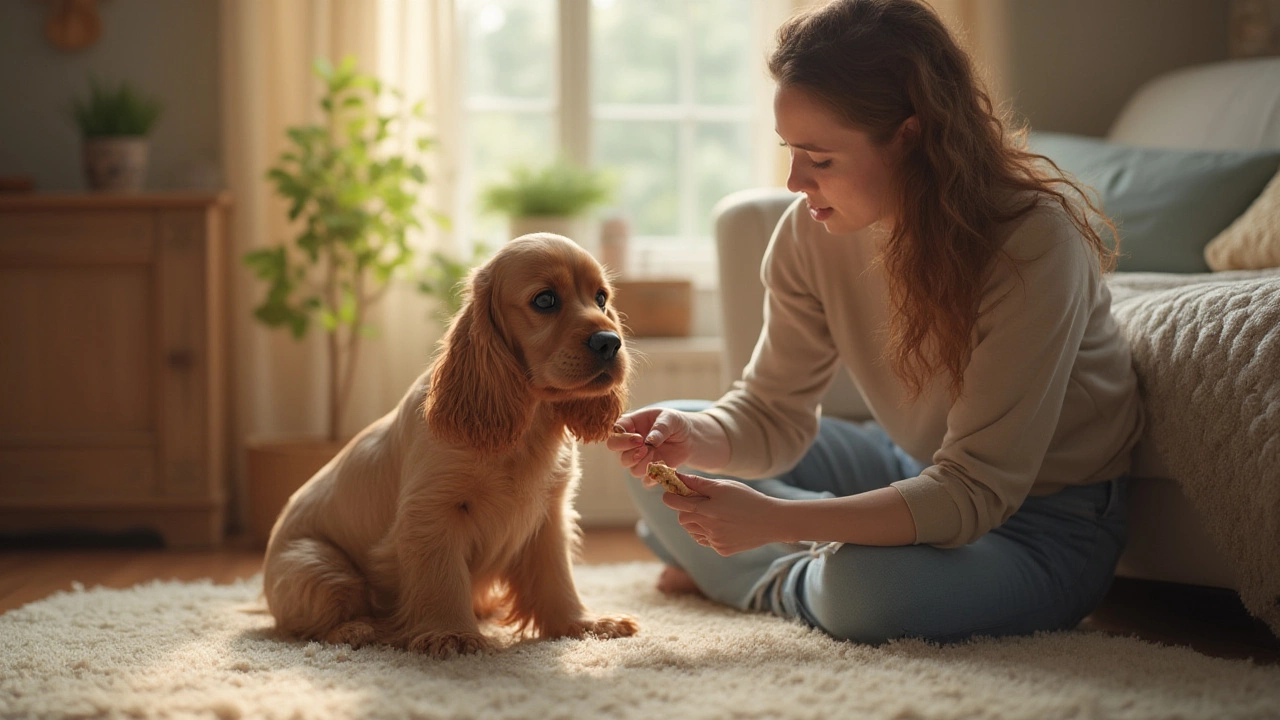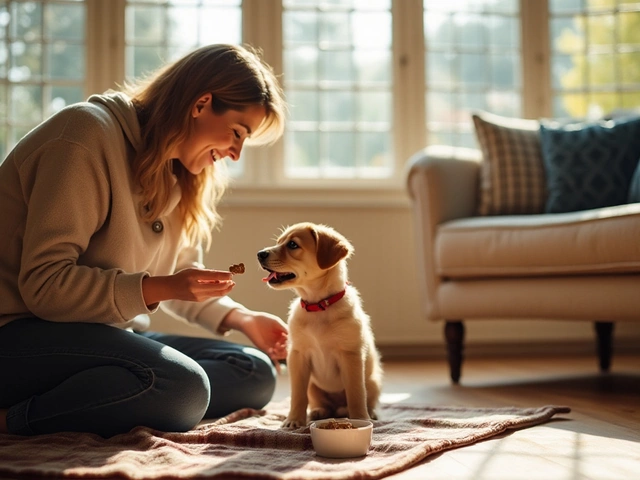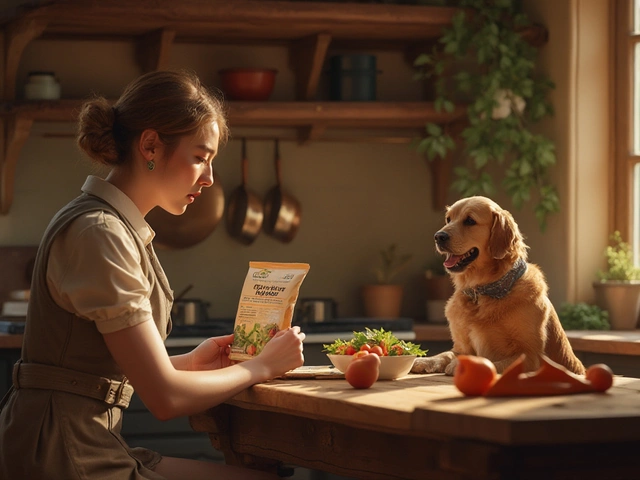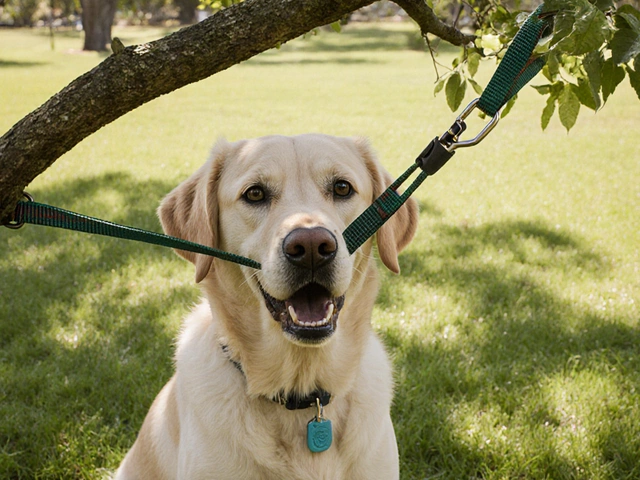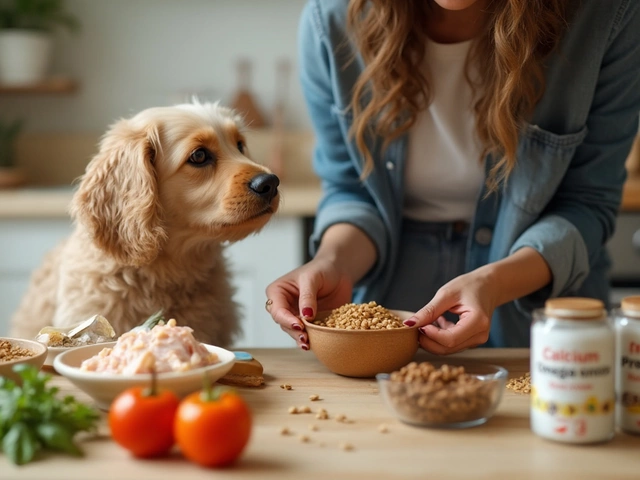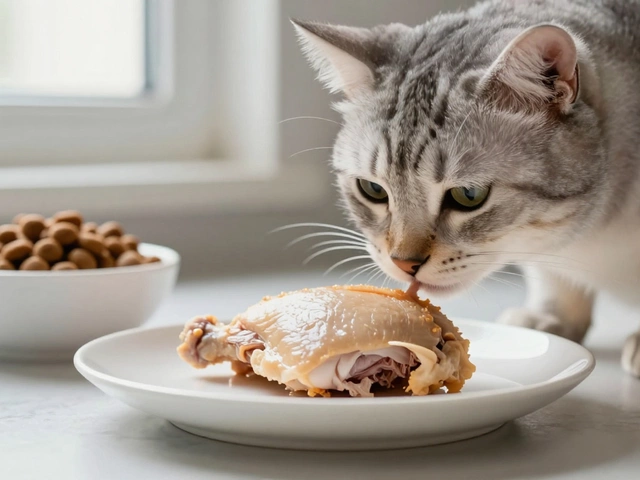Ever noticed your dog looking miserable at the groomer’s? Maybe they whimper, let out a suspicious little yelp, or end up with watery eyes. Before we jump to conclusions, it’s worth digging into what really goes on in a dog’s mind (and body) during a grooming session. Does fur trimming, nail clipping, or a scrub in the tub actually make dogs cry? Or is that wet-eyed look something else entirely?
Understanding Canine Tears: What Does "Crying" Mean For Dogs?
Most people picture tears rolling down human faces when we talk about crying. For dogs, it’s more complicated. Technically, dogs do produce tears—those precious eyes are kept moist through tear ducts, just like ours. But here’s a twist: dog tears aren’t a direct result of emotions like sadness or fear. Their tears are to keep their eyes healthy and protected from dust, dirt, and bacteria.
If your pup’s eyes seem unusually leaky during grooming, it’s usually physical, not emotional. The culprit might be stray hairs, shampoo, or simply stress causing increased tear production. Don’t expect Fido’s tears to mean “I’m sad” in the way you might think. But that doesn’t mean dogs don’t feel strong emotions at the groomer’s table. They just don’t express them the same way humans do.
Dogs don’t sob, but they absolutely communicate discomfort, stress, or fear in other ways. This can include whining, yipping, or shaking. Sometimes they’ll even freeze up or try to wiggle away. Their body language tells the whole story. If a dog is truly unhappy, you’ll see it in their eyes—wide and fearful—or their tail clenched down, body tight, ears pinned. That’s a dog saying, “I’m not okay with this.” It’s important for us to notice these signals and respond with patience and compassion.
Interestingly enough, some breeds have naturally watery eyes due to flatter snouts or shallow eye sockets—think Shih Tzus or Pugs. For these dogs, tears aren’t a sign of sadness; it’s simply how their faces are built.
So, do dogs cry during grooming? They might tear up, but unless you see other signs of distress, you’re most likely seeing a physical response rather than emotional tears. Still, be alert: too much watery discharge can signal irritation or a grooming product allergy, so always stick with pet-safe shampoos and check in with your vet if something seems off.
Dog Emotions at the Groomer: Stress, Fear, and Other Feelings
There’s a world of emotion going on beneath that coat of fur. Dogs can get nervous or overwhelmed at the groomer’s, especially if it’s noisy, there are strange smells, or they’re handled by a new person. Some common signals your dog feels uneasy? Whining, drooling, panting for no reason, licking their lips, or heavy shedding (yes, hair can pour out from stress—the groomers know!).
Stress doesn’t just show up in their sounds and body language. Studies by the American Veterinary Medical Association show that up to 39% of dogs show clear, observable stress during grooming appointments. For some, the stress is minor—a matter of nerves. For others, it turns into panic that makes the experience rough for both dog and groomer.
Crying out—whining, whimpering, or even yelping—is a natural form of canine communication. It means, “I’m uncomfortable,” or “Please stop.” Dogs may vocalize to let their groomer (or you) know they need a breather. Some just don’t like their paws handled, others get anxious with clippers or unfamiliar routines. The trick is knowing how to read your dog and not brushing these signs off as simple stubbornness.
What about positive feelings? Believe it or not, plenty of pups love grooming. If your dog is happy, you’ll see loose body language, relaxed mouth, ears in a natural position, and maybe even a goofy grin (tongue out, eyes squinty—a classic look of contentment). Some will wag their tails or nuzzle up to the groomer as if to say, “Keep going, please!”
Paying attention to these emotional cues goes a long way. When groomers or owners create a calm, patient, and positive atmosphere, dogs pick up on the vibes. The machine noises, smells, and strange hands may make them nervous, but reassurance and treats can quickly tip the emotional balance back in their favor.
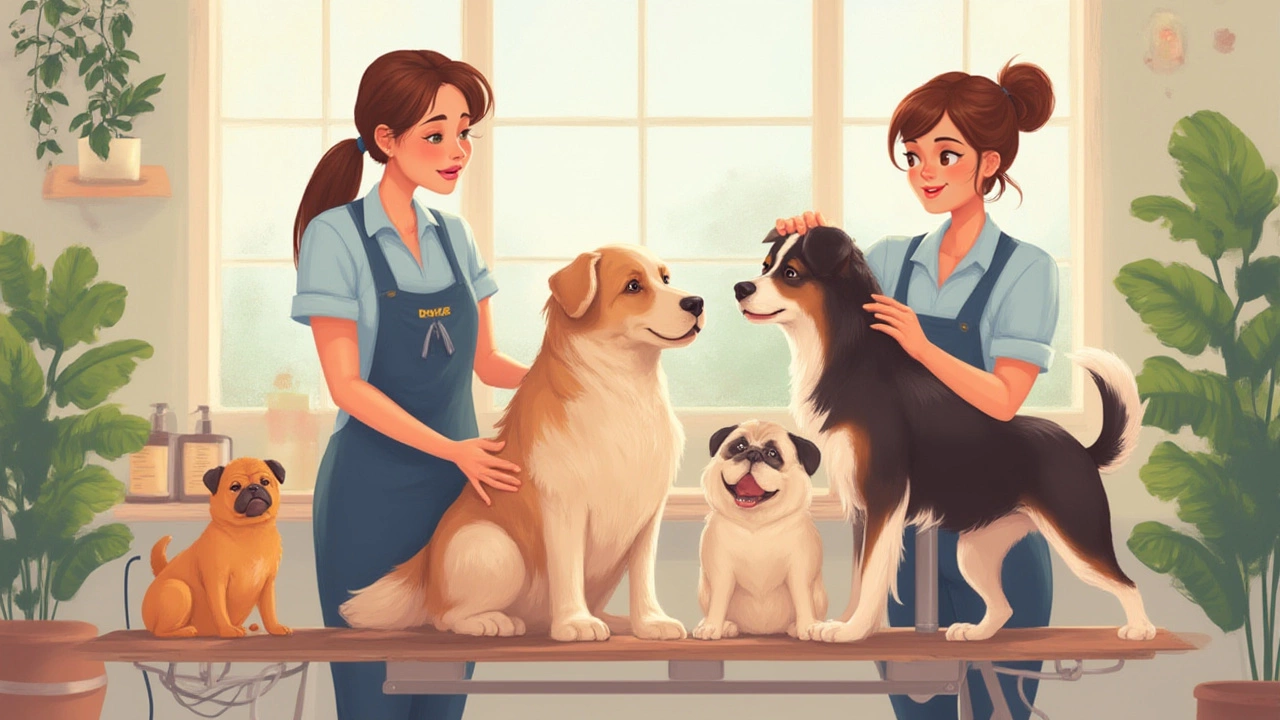
Physical Reactions: Tear Production, Whining, and Body Language
Crying, in the sense of water coming from a dog’s eyes, is seldom about feeling sad or scared. Instead, increased tear production during grooming is usually a reaction to physical irritation. Maybe there’s a little shampoo splashed too close to the eyes or hair falling inward as it’s trimmed. The wind from a dryer or clippers humming nearby can push tiny particles into the eyes, causing discomfort and tears.
There’s actually a bit of science to it: tears in dogs serve an antibacterial function, and the fluid helps clear out unwanted particles. If you see a lot of watery discharge only during grooming, try switching up shampoos, rinsing extra well, and using blunt, rounded scissors near the eyes. Any redness or swelling? That’s a sign you should stop and check with your vet.
But let’s not forget vocal signals. It’s rare for a dog to be completely silent at the groomer. Even the bravest, most laid-back dogs may let out a squeak or whimper when they’re startled, stressed, or having a toenail clipped a little too close. These vocalizations are different from emotional "crying"—they’re warning sounds or startled yipes. It’s your dog essentially saying, "What’s happening?"
Pay close attention to body language as well. Watch for these telltale signs that your dog is stressed at the table:
- Cowering or trying to hide
- Shaking or trembling
- Whale eye (whites of the eyes showing)
- Pinned ears or tucked tail
- Pacing or excessive panting
Each dog is unique. Some just hate certain parts of the process—ear cleaning or nail cutting, for example. Recognize what sets your dog off and talk to your groomer about how to minimize stress points.
Here’s a look at the most common physical and behavioral signs noticed during grooming, based on groomer surveys and veterinary reports:
| Sign | Possible Cause |
|---|---|
| Watery Eyes | Shampoo, loose hair, stress, breed-specific anatomy |
| Whining | Fear, discomfort, confusion |
| Trembling | Anxiety, unfamiliar environment, loud noises |
| Heavy Shedding | Stress-related hormonal changes |
| Refusing to Stand | Fatigue, fear, pain (look for injury) |
How to Make Grooming a Low-Stress Event
Dogs sense your energy. Stay calm, relaxed, and positive when prepping for grooming. If your pup gets tense at the sight of nail clippers or a brush, don’t force it. Work gradually, rewarding calm behavior. Treats, praise, or even a short play break can reset a nervous mind.
Introduce grooming tools slowly. If your dog’s never seen a hair dryer up close, let them sniff and inspect it while it’s turned off. Later, switch it on for a few seconds, rewarding confident behavior with their favorite treat. It turns the unknown into something familiar (and even a little fun).
Choose the right products. Aim for tear-free, hypoallergenic shampoos—always pet-safe, never human shampoo. Double-check temperatures on water, dryers, and clippers. If your dog’s particularly sensitive, ask your vet about medicated shampoos or calming sprays made for pets. Some folks swear by dog-appeasing pheromone sprays or collars for grooming day nerves.
Don’t forget the power of routine. If you only groom when your dog’s a tangled mess, it becomes a big, stressful event. Make brushing and light bathing a regular part of the week. That way, when it’s time for a full groom, your dog knows what to expect—and it’s no big deal.
Sometimes it’s not you, it’s the place. If your dog’s terrified of professional groomers, try mobile services or at-home grooming. Some pups handle less stimulation, fewer strange dogs around, and the comfort of home much better. But if a pro is needed, talk to them openly. Most groomers have worked with anxious dogs and are happy to go slow, use calming techniques, or let you stay in the room if possible.
Dogs with real grooming phobias may do best with the help of positive reinforcement trainers. These experts can teach your dog that nail clippers and brushes mean good things—treats, toys, or just a gentle scratch behind the ear. Keep sessions short and upbeat, with plenty of breaks. And remember to praise your pup for every small success. In time, even the most reluctant canine can become a grooming champ.
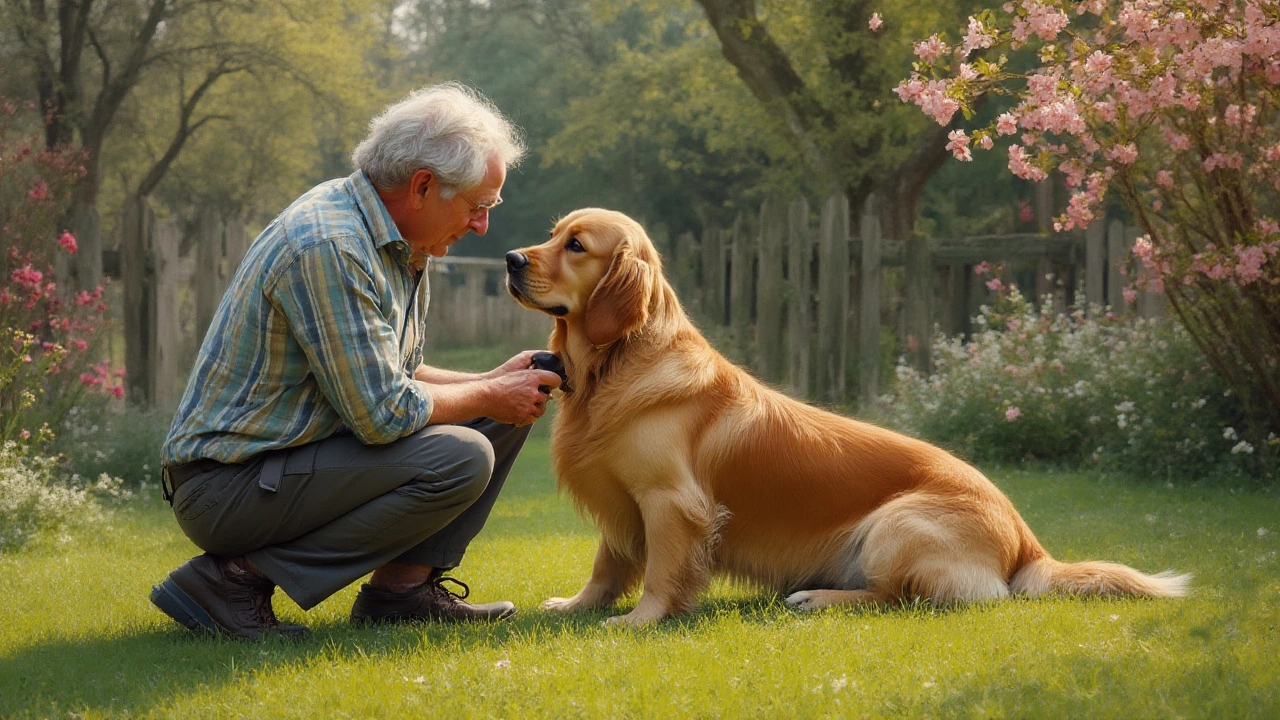
When to Worry: Signs of Real Distress or Health Problems
While most watery eyes or light whining during grooming are harmless, sometimes those signs point to a real problem. Persistent tears can signal an allergic reaction to products, scratched corneas, infections, or even underlying health issues like blocked tear ducts.
If you notice any of these symptoms, it’s time to check with your vet:
- Constant, thick, or colored eye discharge
- Red, swollen, or crusty eyelids
- Dog cries out in pain and refuses to be touched in certain areas
- Repeated head shaking or pawing at the face after grooming
- Loss of appetite, sudden lethargy, or vomiting following grooming
Sometimes the problem is simple—maybe a tiny hair or soap got in the eye, or the water was too hot. Gently flush the eyes with saline (not tap water!), pat dry, and keep an eye out (pun intended). But if symptoms last more than a couple hours or worsen, your vet needs to take a look.
Serious anxiety or distress is its own red flag. If your dog panics, tries to flee, or shows signs of aggression at the groomer’s, don’t force it. Chronic grooming stress can actually harm your dog’s wellbeing and make every future session harder. Talk to your vet about medication or prescription anxiety aids if all else fails. It’s not about spoiling your dog—it’s about protecting their quality of life, just as you would for yourself or a child afraid of the dentist.
The good news? With time, patience, and the right approach, even the quirkiest dogs can learn that grooming doesn’t have to be scary—or tear-filled.
